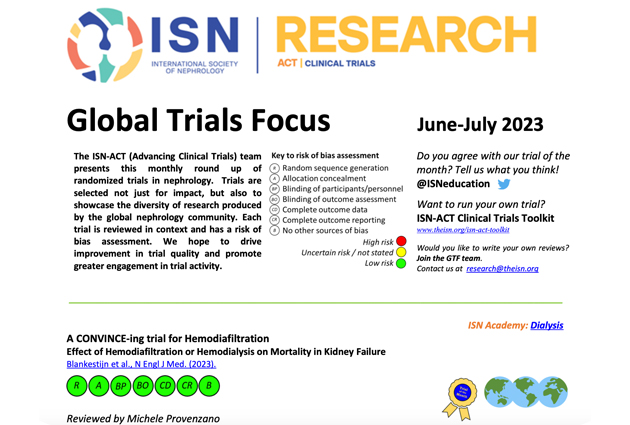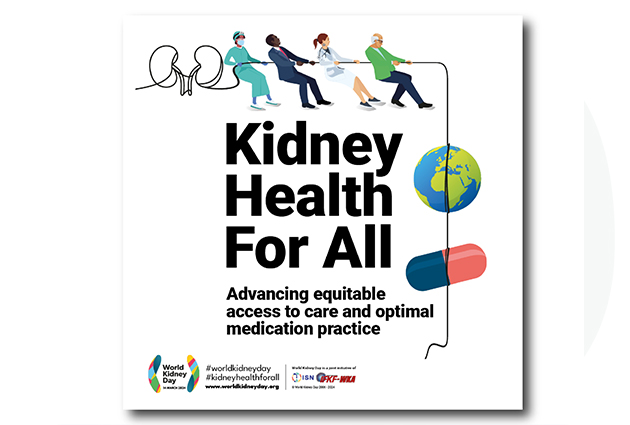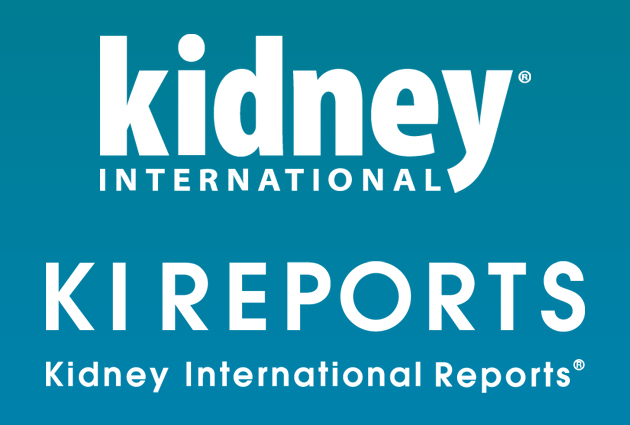High-dose Hemodiafiltration or Hemodialysis for Patients With Kidney Failure? Michele Provenzano on the CONVINCE Trial
Michele Provenzano summarizes the design and outcomes of the ISN-ACT Global Trials Focus’ latest “Trial of the Month” and comments on possible mechanisms of the benefit and limitations of the results.
A CONVINCE-ing trial for Hemodiafiltration
Effect of Hemodiafiltration or Hemodialysis on Mortality in Kidney Failure
Reviewed by Dr. Provenzano, ISN-ACT Global Trials Focus Subgroup co-chair
Summary
In the pragmatic CONVINCE trial, 1360 adult participants receiving high-flux hemodialysis for at least three months were randomized to either high-dose hemodiafiltration (n=683) or high-flux hemodialysis (n=677) for a median follow-up of 30 months.
The average convection volume in the high-dose hemodiafiltration group was 25.3 liters per session. The primary outcome of death from any cause occurred less often with hemodiafiltration, occurring for 118 participants (17.3%) in the hemodiafiltration group and in 148 participants (21.9%) in the hemodialysis group (hazard ratio, 0.77; 95% confidence interval [CI], 0.65 to 0.93; P=0.005). Secondary outcomes, including death from cardiovascular causes, the composite outcome of fatal or nonfatal cardiovascular outcomes, and the risk of recurrent hospitalization, were similar between groups. Death due to infection was reduced in the hemodiafiltration group.
Commentary
Hemodialysis and hemodiafiltration are currently used for patients with kidney failure requiring replacement therapy. Hemodialysis relies on the process of ‘diffusion’ to remove waste molecules. Hemodiafiltration is similar in that it uses the process of diffusion, but it also uses ‘convection,’ which involves the removal of large volumes of fluid via ultrafiltration and replacement with substitution fluid. The mechanisms of benefit are not certain, but adding convection may result in increased removal of larger uremic toxins such as urea and ß2 microglobulin, better hemodynamic stability, and reduced endothelial dysfunction.
The CONVINCE trial supports a lower risk of death from any cause among patients treated with high-dose hemodiafiltration than those receiving conventional high-flux hemodialysis. While this pragmatic trial achieved high convection volumes of 25.3L/session (which has not been possible in previous studies), the generalizability of the results may be reduced by the relatively young population (mean age 62.5 years) and a very high percentage (>80%) of arteriovenous fistulas.
Moreover, hemodiafiltration can be expensive, and treatment effectiveness with cost-utility must be balanced. Additional data on patient-reported outcomes and cost-effectiveness from the trial are expected and would be important when considering the implementation of the intervention. The High-Volume Hemodiafiltration vs. High-Flux Hemodialysis Registry (H4RT) study, presently underway in the UK, will provide further insight into the debate of high-dose hemodiafiltration versus high-flux hemodialysis.










